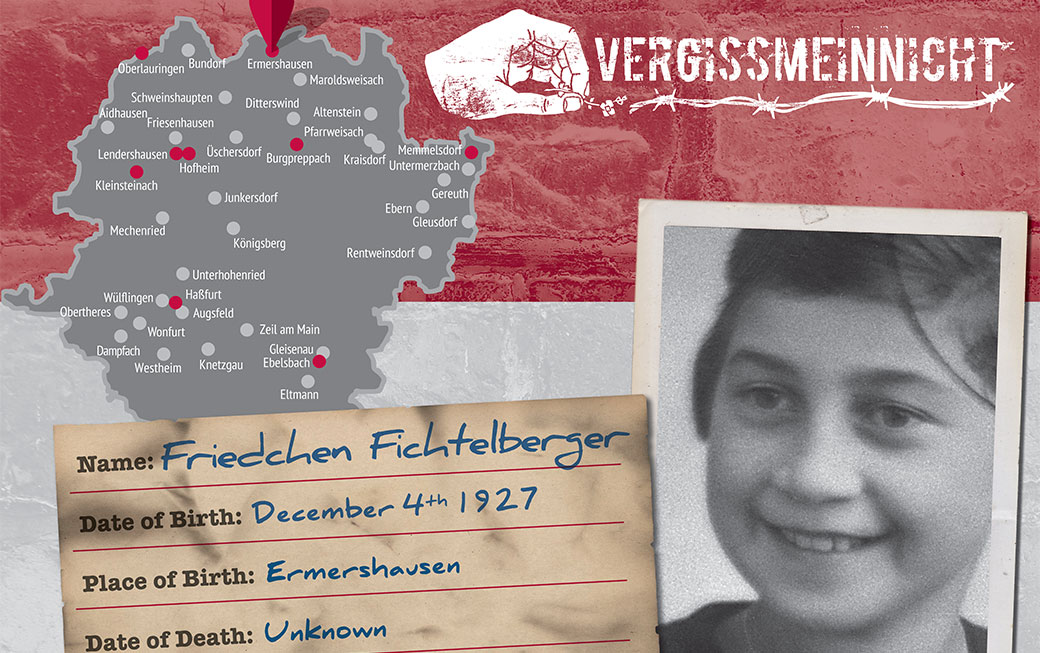Vergissmeinnicht [“Forget-Me-Not”] tells stories of innocence and loss
Evocative panels depict the fates of 24 Jewish children during Holocaust
By Jan Lucas on November 11, 2017

It took more than 70 years for their stories to emerge from the shadows.
Now, thanks to funding from The Jacob & Hilda Blaustein Fund of the Associated, the Baltimore Hebrew Institute of Towson University, and BTU, TU is hosting Vergissmeinnicht [Forget-Me-Not]: What Children’s Stories Can Teach Us about the Holocaust, on Monday, November 13, from 5:30 to 7 p.m. in the South Campus Pavilion.
The event is free and open to the public.
In 2016 a group of German high school students undertook a research project designed to illustrate what had happened to 19 area Jewish families during the Holocaust. The effort was directed by Cordula Kappner, a German librarian, who for decades had used her genealogical-research skills to provide details about the fate of German Jews during World War II.
For the next two years the students expanded Kappner’s research and contributed research and writing of their own to the project. They plowed their knowledge into an exhibition comprising 23 panels—four to provide background and the remainder dedicated to the children.
The Vergissmeinnicht project not only enabled the German teens to conduct research but also to gain a better understanding of their own history, says Joyce Garczynski, assistant university librarian for development and communication.
“The grants enabled TU to have the German panels translated and recreated for English-speaking audiences,” she adds. “The panels are amazing—very affecting.”
“The presentation helps make the history even more moving,” Garczynski says. “The panels are pop-up banners with full-size photos of individual children. It hits you that these were real people. Because the stories are told in the present tense, you stop thinking of the children in the past tense. They have a chance to live again.”
Towson resident Fred Katz is one of the subjects whose wartime experience is depicted on a panel.
Katz, a sociologist and author, escaped the Holocaust and later emigrated to the United States. For years he corresponded with Kappner to learn more about his family’s fate. (All perished.) Now marking his 90th birthday, Katz will be present at the exhibition to share his story.
Most stories end tragically, says Garczynski. One panel tells of a boy who had a chance to escape to the United States but chose instead to stay with his family. The Nazi murdered him and his loved ones in concentration camps.
Although the panels will be on view at TU’s Albert S. Cook Library November 14-28, Garczynski is seeking a venue in the Baltimore Jewish community where they can be displayed longer.
She also wants to share the panels with area high school students.
She and Ashley Todd-Diaz, head of special collections and university archives, are developing peer-to-peer learning opportunities in which students could learn from their German peers. Schools have expressed interest, and Garczynski and Hobbs-Diaz hope that teachers who attend the exhibition will want to bring it and its companion curriculum into their classrooms.
Garczynski says the exhibit illustrates how research contributes to the narrative in unexpected ways. “We learn about the evidence available to researchers, including photos, records, news accounts, and other sources,” she explains. “The panels incorporate different kinds of evidence to tell these stories.
“Conducting research is more important now than ever,” she adds. “We need to understand history.”
This story is one of several related to President Kim Schatzel's priorities for Towson University: BTU: Partnerships at Work for Greater Baltimore.